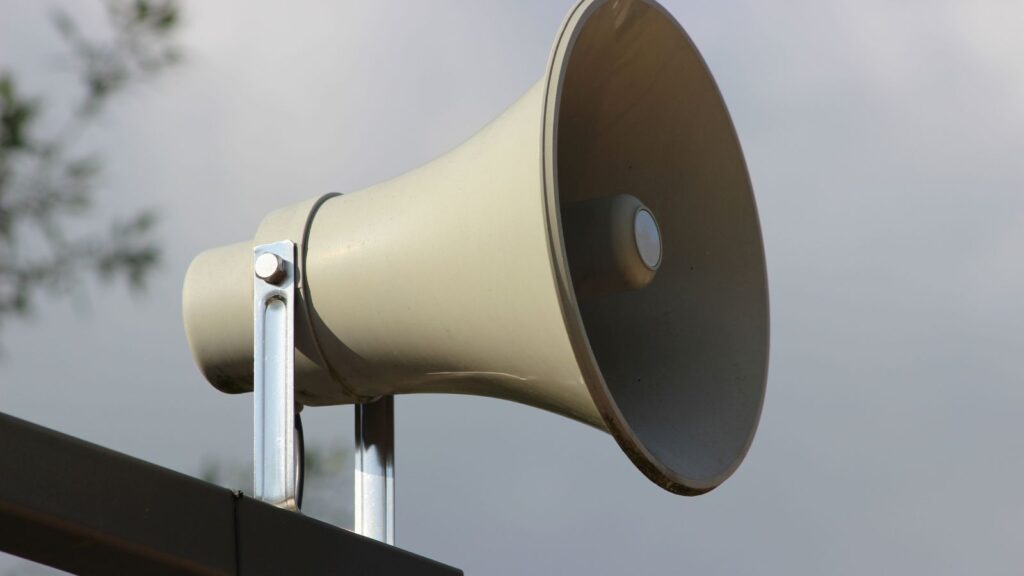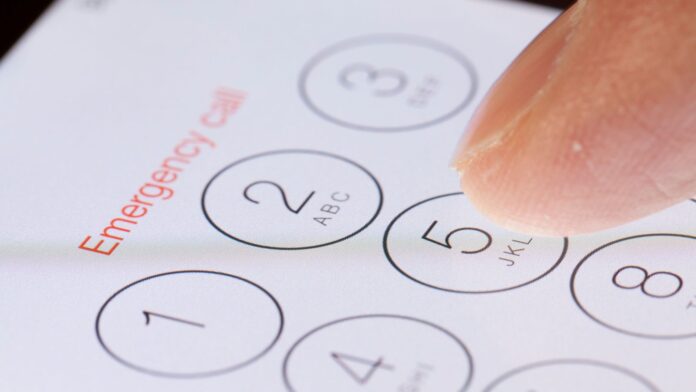In today’s unpredictable world, the importance of emergency communication in crisis situations cannot be overstated. Effective and timely communication plays a critical role in ensuring safety, coordinating response efforts, and providing reliable information to the public during unexpected events.
Whether it’s natural disasters like hurricanes or wildfires, human-caused incidents such as bombings or accidents, or global health crises like COVID-19 pandemic – having robust lines of communication can make all the difference between chaos and resilience.
In this blog post, we’ll explore various tools and strategies for effective emergency communication as well as share examples of successful crisis management efforts.
Key Takeaways
- Effective and timely emergency communication plays a critical role in ensuring safety, coordinating response efforts, and providing reliable information to the public during unexpected events.
- Emergency communication tools such as mass notification systems, social media platforms, mobile apps, two-way radios and walkie-talkies, as well as in-person communication are all essential options that should be leveraged appropriately.
- Off – grid communities can take lessons from successful examples of emergency communications by developing robust communication strategies tailored to their specific needs and resources. It’s essential to ensure that your communication plan includes multiple channels of mass notification systems to enhance the scope of getting crucial information quickly.
- During emergencies or crises like wildfire or natural disaster situations, much emphasis is placed on quick access to accurate information. Leveraging various digital solutions like effective use of social media platforms & mobile applications could play an expectedly significant role during such scenarios.
Understanding The Role Of Emergency Communication In Crisis Situations
Emergency communication plays a critical role in crisis situations, as it ensures safety and security by coordinating emergency response efforts and disseminating timely and accurate information to the public.
Ensuring Safety And Security
In the realm of off-grid living, prioritizing safety and security during crisis situations is crucial. Effective emergency communication plays an essential role in protecting individuals and communities from potential harm while maintaining a sense of order amidst chaos.
One successful example of ensuring safety through enhanced communication comes from the response to Hurricane Katrina. The disaster highlighted the need for improved coordination among various emergency services providers, leading to the establishment of better information-sharing networks in subsequent crises.
Off-grid communities can take lessons from this experience by developing robust communication strategies tailored to their specific needs and resources – including amateur radio networks, satellite phones for remote locations, or leveraging social media platforms when internet access is available.
Coordinating Emergency Response Efforts
During a crisis situation, emergency response efforts must be coordinated to ensure that resources are used effectively and efficiently. Timely communication is critical when managing an emergency response effort.
For example, during Hurricane Katrina in 2005, federal and local agencies worked together to coordinate search-and-rescue operations for survivors while also ensuring that basic needs such as food and shelter were met.
Communication tools such as radios, satellite phones, mobile apps, social media platforms are essential to coordinate emergency response activities. These tools enable relevant stakeholders to stay informed about important changes in real-time so they can respond quickly when needed.
Overall it is clear that effective communication plays a vital role in coordinating emergency response plans during crises situations.
Disseminating Timely And Accurate Information To The Public
Disseminating timely and accurate information to the public during a crisis situation is crucial for ensuring their safety. In today’s digital age, social media platforms have become an important tool for disseminating real-time updates on emergency situations, including evacuation orders, road closures, and shelters.
During wildfires or natural disasters like hurricanes and earthquakes, amateur radio operators provide timely information to people who don’t have access to other forms of communication.
Some mobile apps also include features providing critical incident communication that allows users in affected areas to communicate with first responders or emergency personnel during emergencies.
Tools And Strategies For Effective Emergency Communication
The most effective tools for emergency communication include mass notification systems, social media platforms, mobile apps, two-way radios and walkie-talkies, in-person communication, and print and broadcast media.
Mass Notification Systems

Mass Notification Systems are a critical tool for emergency communication during crisis situations. These systems can provide alerts and updates to individuals and communities through various channels, such as text messages, emails, phone calls, social media platforms, and mobile apps.
During power outages or loss of internet connectivity in off-grid living scenarios, satellite phones can also be used to receive important notifications from authorities.
It is essential to ensure that your communication plan includes multiple channels of mass notification systems to enhance the scope of getting crucial information quickly to relevant people in case of an emergency.
Social Media Platforms
Social media platforms such as Facebook, Twitter, and Instagram have become critical tools for emergency communication in recent times. During a crisis situation, social media can enable authorities to communicate quickly with people who are impacted by the disaster or who need information about it.
It’s also an excellent way to share updates on evacuation orders or safety tips.
During emergencies like wildfires or hurricanes, social media has been used effectively to share images of damage, provide public service announcements related to power outages or evacuation routes, and connect individuals with emergency resources such as food banks or shelters.
Social media is effective because it is widely accessible – most people own smartphones – making it easier for them to receive important updates during a disaster.
Mobile Apps
Mobile apps have become an integral part of emergency communication plans, providing users with real-time updates and notifications. With a wide range of features that can be tailored to suit specific needs, these apps are essential tools for people living off grid who may not have access to traditional communication channels in the event of a crisis.
Some popular emergency response apps include the FEMA app, which provides weather alerts and information on disaster resources; Life360, which allows families to track each other’s locations in real time; and Zello Walkie Talkie, which turns your phone into a two-way radio.
By having these mobile apps downloaded before an emergency situation arises, individuals can stay informed and prepared during times of crisis.
In addition to the aforementioned benefits, mobile apps also offer additional functionality such as offline maps allowing users to navigate areas without internet connectivity or pre-loaded medical protocols used by first responders when they arrive at an incident site.
The use of mobile applications coupled with other communication tools like two-way radios can greatly improve disaster response efforts ensuring faster reaction times from first responders ultimately leading to better outcomes for those affected by crises.
Two-way Radios And Walkie-talkies
Two-way radios and walkie-talkies are essential communication tools for off-grid living during emergency situations. These devices work without relying on cellular networks, making them an excellent option when traditional communication channels fail.
During natural disasters like hurricanes or wildfires, two-way radios can help individuals stay connected and informed about evacuation orders or updates from authorities.
It’s important to note that using two-way radios requires some training and knowledge about the frequencies used by different communication channels.
In short, owning a two-way radio is a smart investment for anyone interested in off-grid living or preparing for emergencies.
In-person Communication
During a crisis situation, in-person communication can be invaluable. This could include face-to-face meetings or phone calls with emergency responders and community leaders.
In-person communication allows for real-time collaboration and decision-making to occur, which can be critical during fast-moving emergencies like wildfires or hurricanes.
For those living off-grid, it’s important to have a plan in place for how you will communicate with others during a crisis. This may involve establishing relationships with nearby neighbors or identifying safe meeting locations where you can convene if necessary.
In-person communication can also be used to ensure that everyone is on the same page regarding evacuation plans and safety protocols.
Print And Broadcast Media
Another effective tool for emergency communication during crises are print and broadcast media. These mediums play important roles in disseminating critical information to the public, including updates on evacuation orders, safety tips and other relevant news.
During Hurricane Katrina, local governments used traditional media such as newspapers and radio stations to communicate about evacuations, transportation routes and other safety instructions.
This ensured that even those who were not internet or smartphone savvy could still stay informed.
Overall, incorporating traditional methods of communication alongside modern technology is key when it comes to preparing for emergencies off-grid living situations.
Best Practices For Preparedness And Planning
Creating a comprehensive emergency communication plan, identifying emergency contacts and communication roles, ensuring access to necessary communication tools, and conducting regular training and drills are crucial for effective crisis management.
Creating A Comprehensive Emergency Communication Plan
One of the most important steps in ensuring effective emergency communication during a crisis situation is developing a comprehensive emergency communication plan. This involves identifying emergency contacts and communication roles, as well as determining access to necessary communication tools such as two-way radios, satellite phones, and internet and social media platforms.
A family emergency communication plan can be especially important for those living off-grid or in remote areas. This should include designated meeting places and contact information for all family members, neighbors, and local authorities.
Identifying Emergency Contacts And Communication Roles
Identifying emergency contacts and communication roles is an important step in creating a comprehensive emergency communication plan. It involves determining who will be responsible for communicating information during a crisis situation, as well as identifying key contacts who should be notified about the emergency.
It’s also important to establish clear lines of communication between these contact points and make sure everyone understands their roles and responsibilities. This can help ensure that critical information is disseminated quickly and accurately in case of an emergency.
Ensuring Access To Necessary Communication Tools
It’s crucial to have access to necessary communication tools during emergency situations. These tools can include anything from two-way radios and walkie-talkies, mobile apps, and social media platforms to print and broadcast media.
One way of doing this is by identifying the most appropriate communication tool for your specific situation. For example, if you’re living in an area with limited cell coverage or internet connectivity, satellite phones might be your best bet.
Another way is by conducting regular checks and maintenance on your equipment to make sure they are always working optimally when needed the most.
Overall, ensuring seamless access to necessary communication tools helps minimize potential harm that could result from inadequate responses during crisis situations.
Conducting Regular Training And Drills
Preparing for emergencies is critical, and conducting regular training and drills is essential in ensuring that individuals are prepared to respond quickly. Whether it’s a natural disaster or human-made incident, training and drills help people stay calm under pressure, think on their feet, and take the appropriate actions.
It’s crucial to create a comprehensive emergency communication plan that outlines the roles of various team members during an emergency situation. This document should include contact information for key personnel within your organization as well as local authorities such as police officers, firemen, medical professionals who may be called upon in times of crisis situations.
In addition to this, regularly scheduled practice sessions ensure that everyone knows what they’re supposed to do in case of an eventuality.
Additionally, recurring training helps refine skills so individuals can communicate more effectively with each other during chaotic events like earthquakes or wildfires where cell coverage may be unreliable or non-existent! Communication tools like two-way radios also come in handy here since they can facilitate communication even when internet networks have been compromised or damaged by high winds or flooding.
By conducting regular training exercises and drills towards developing unique strategies for communication during disasters through organized simulations will enable one to have quick thinking abilities which significantly reduce panic levels when facing adverse situations.
Examples Of Successful Emergency Communication
Hurricane Katrina: Despite the catastrophic effects of Hurricane Katrina, officials succeeded in keeping people informed through various communication channels and successfully coordinated emergency response efforts.
Boston Marathon Bombings: Quick response by first responders and effective communication helped minimize casualties during the Boston Marathon bombings.
COVID-19 Pandemic: Governments worldwide use social media platforms to disseminate important information about COVID-19, including preventative measures and vaccination updates.
California Wildfires: The California Office of Emergency Services delivered critical evacuation instructions using mass notification systems such as Wireless Emergency Alerts (WEAs) during the devastating wildfires.
These examples highlight how effective emergency communication can help save lives during a crisis situation.
Hurricane Katrina
During the Hurricane Katrina disaster, communication played a crucial role in saving lives and minimizing harm. One of the biggest challenges during this crisis was the lack of clear communication between different agencies and responders.
As a result, rescue efforts were delayed, and people were left stranded without basic necessities such as food, water, and medical attention.
The experience highlighted just how important it is to have a comprehensive emergency plan in place before disasters strike. This plan should include identifying emergency contacts and communication roles within your community or organization and ensuring access to necessary communication tools like two-way radios, mobile apps or satellite phones.
Boston Marathon Bombings
During the Boston Marathon bombings in 2013, emergency communication played a critical role in managing the crisis. Immediately after the explosions, authorities used social media platforms and mobile apps to disseminate information about the incident and provide safety instructions to residents.
The two-way communication between first responders and residents enabled them to capture one of the suspects quickly. The city also leveraged traditional media such as broadcast television and radio to ensure that critical updates were accessible across various channels.
COVID-19 Pandemic
The COVID-19 pandemic has highlighted the importance of effective emergency communication during a crisis situation. With the rapid spread of the virus, it was critical to have accurate and timely information disseminated through various channels, including social media, government websites, and news outlets.
The use of technology such as mobile apps for contact tracing and mass notification systems also played a crucial role in managing the pandemic. Communities that had effective crisis communication plans in place were able to proactively respond to this unprecedented health crisis.
California Wildfires
The California wildfires serve as a powerful reminder of the importance of emergency communication in crisis situations. In 2020 alone, there were over 9,600 wildfires that burned more than 4 million acres throughout the state.
Effective communication played a critical role in keeping people safe during these devastating fires. Emergency responders used mass notification systems to keep residents informed about evacuation orders and route changes, while social media platforms provided real-time updates on fire conditions and road closures.
Amateur radio operators also assisted with communication efforts when traditional channels failed due to power outages or damaged infrastructure.
The Importance Of Collaborative Efforts In Emergency Communication
Collaborative efforts in emergency communication involve building partnerships with local agencies, coordinating communication efforts with community-based organizations, and leveraging technology to enhance emergency communication.
Building Partnerships With Local Agencies
Building partnerships with local agencies is a crucial part of effective emergency communication planning. Local agencies such as fire departments, police departments, and hospitals have an important role to play in responding to emergencies and disasters.
For example, during the COVID-19 pandemic, local health departments worked closely with state governments to provide accurate information on how to slow the spread of the virus.
They also partnered with community-based organizations to disseminate information about testing sites and vaccine distribution centers.
By building partnerships with local agencies ahead of time, communities can improve their ability to respond quickly when faced with crisis situations.
Coordinating Communication Efforts With Community-based Organizations
Community-based organizations can be valuable partners in emergency communication efforts. During a crisis, these groups may have important insights into the needs and concerns of vulnerable populations that are not being addressed by mainstream resources or institutions.
Collaborating with community-based organizations can help ensure that information is disseminated effectively to all members of a community, which is critical for advancing risk communication and enhancing public safety.
In the aftermath of Hurricane Katrina, for instance, grassroots organizations like Common Ground Collective worked alongside first responders to coordinate relief efforts and provide essential services to local residents who had been neglected by traditional aid agencies.
Leveraging Technology To Enhance Emergency Communication
In today’s digital age, technology plays an ever-increasing role in emergency communication. From mass notification systems to social media platforms and mobile apps, technology provides a range of tools for disseminating critical information during crisis situations.
Technology can also aid in emergency planning and preparedness by providing access to necessary resources and allowing for simulated emergency drills to enhance training efforts.
It is crucial that individuals have a reliable plan in place before an emergency or disaster strikes, taking into account potential limitations with technology during these times.
Conclusion
In conclusion, emergency communication is a crucial element in crisis situations. It plays an essential role in ensuring safety and security, coordinating response efforts, and disseminating timely and accurate information to the public.
Effective communication tools like mass notification systems, social media platforms, mobile apps, two-way radios and walkie-talkies must be leveraged appropriately. Planning for emergencies through regular training and drills help improve responsiveness during crises.
Successful examples of emergency communication such as Hurricane Katrina or the COVID-19 pandemic have demonstrated the importance of collaboration between local agencies and community-based organizations leveraging technology to enhance emergency responses.
FAQs:
1. Why is emergency communication important during a crisis situation?
During a crisis situation, clear and timely communication can mean the difference between life and death for those affected. Effective communication ensures that people receive necessary information about the nature of the crisis, how to stay safe, and what steps they can take to protect themselves and their loved ones.
2. What are some examples of emergency communication tools?
Emergency communication tools include mass notification systems, social media updates from official accounts, text message alerts, radio broadcasts, television updates, and public address systems in public spaces. These channels help ensure that critical information reaches as many people as possible in a fast and reliable manner.
3. How does effective emergency communication benefit businesses?
Businesses have an obligation to keep their employees safe during an emergency situation on business premises or nearby areas. Clear emergency communications such as evacuation plans or shelter-in-place instructions can help maintain employee morale in stressful times while also preserving overall productivity of operations.
4. What strategies should be used by organizations when developing their emergency response plan?
Organizations should develop comprehensive response plans that include defined roles & responsibilities for all staff members; contingency planning for potential interruptions related with power outages/connection issues/ IT backups; constant updating of contact lists so accurate contact info is available when needed most especially outside normal working hours etc.. They also need disaster drills based on various scenarios like natural disasters/fire/floods/bomb threats/etc., involving different departments within an organization where practical training will be given on procedures laid down according to security requirements prevailing at time including local/country laws if its global entityetc., which ensure everyone understands what needs doing regardless of real-life situations arising unexpectedly




